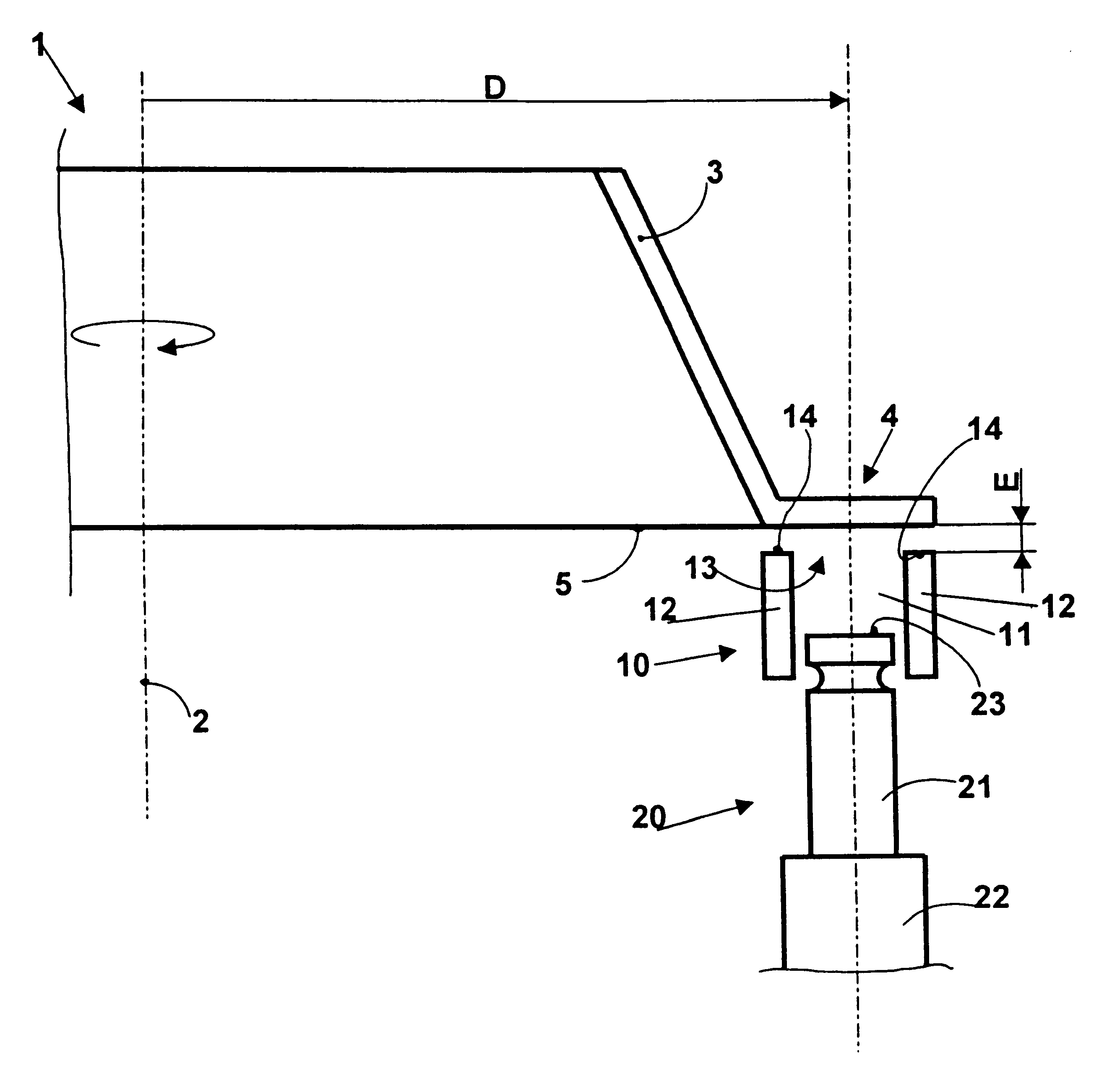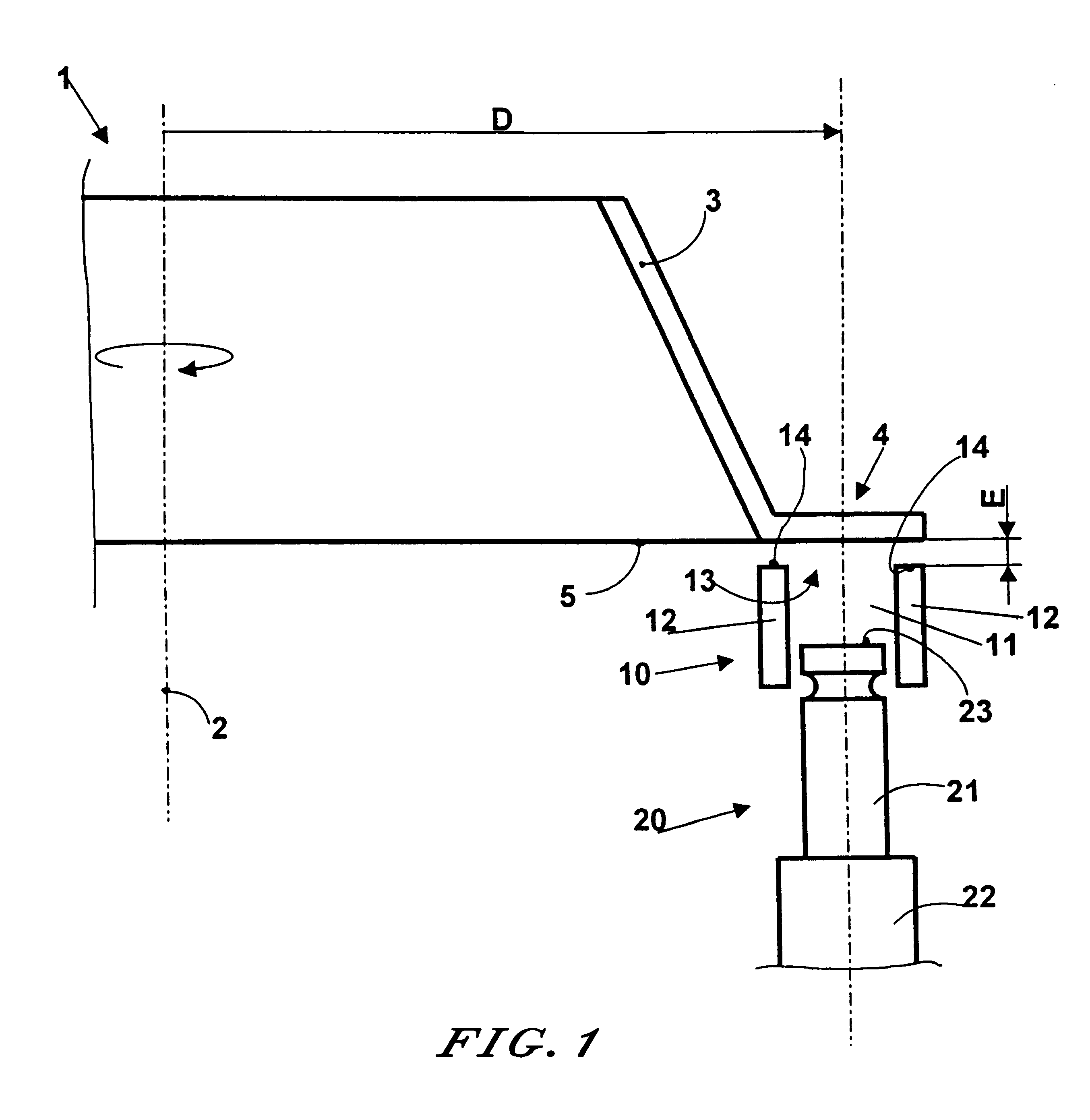Method for the ultrasonic peening of large sized annular surfaces of thin parts
a technology of annular surfaces and thin metal parts, applied in vibratory devices, abrasion apparatuses, manufacturing tools, etc., can solve the problems of difficult to achieve optimum exposure to peening, inability to absorb loading, and inability to penetrate large-scale annular surfaces, etc., to achieve the effect of improving the fatigue strength of the metal part, reducing the initiation and propagation of cracks, and sufficient kinetic energy
- Summary
- Abstract
- Description
- Claims
- Application Information
AI Technical Summary
Benefits of technology
Problems solved by technology
Method used
Image
Examples
Embodiment Construction
Referring to the drawing, the part 1 is an aircraft turbine engine conical rotor support having a thin wall and with a geometric axis 2 of revolution. The part 1 comprises a frustoconical barrel 3, the larger-diameter end of which is extended radially by a flange 4. The flange 4 itself comprises a bearing surface 5 that is to be peened. The bearing surface 5 is annular, flat and radial.
Use is made of chamber 10 inside which a mist of microbeads 11 is sustained. This chamber is laterally delimited by a wall 12 and comprises an opening 13 the edges of which are referenced 14. Use is also made of a vibrator 20 consisting of a sonotrode 21 brought into resonance via one of its ends by a vibration generator 22 which is usually of the quartz type. The other end of the sonotrode 21 comprises a vibrating and essentially flat surface 23. The vibrating surface 23 is placed at the bottom of the chamber 10 and faces towards the opening 13. The vibration generator 22 sets the sonotrode 21 into l...
PUM
| Property | Measurement | Unit |
|---|---|---|
| diameter | aaaaa | aaaaa |
| frequencies | aaaaa | aaaaa |
| diameter | aaaaa | aaaaa |
Abstract
Description
Claims
Application Information
 Login to View More
Login to View More - R&D
- Intellectual Property
- Life Sciences
- Materials
- Tech Scout
- Unparalleled Data Quality
- Higher Quality Content
- 60% Fewer Hallucinations
Browse by: Latest US Patents, China's latest patents, Technical Efficacy Thesaurus, Application Domain, Technology Topic, Popular Technical Reports.
© 2025 PatSnap. All rights reserved.Legal|Privacy policy|Modern Slavery Act Transparency Statement|Sitemap|About US| Contact US: help@patsnap.com


